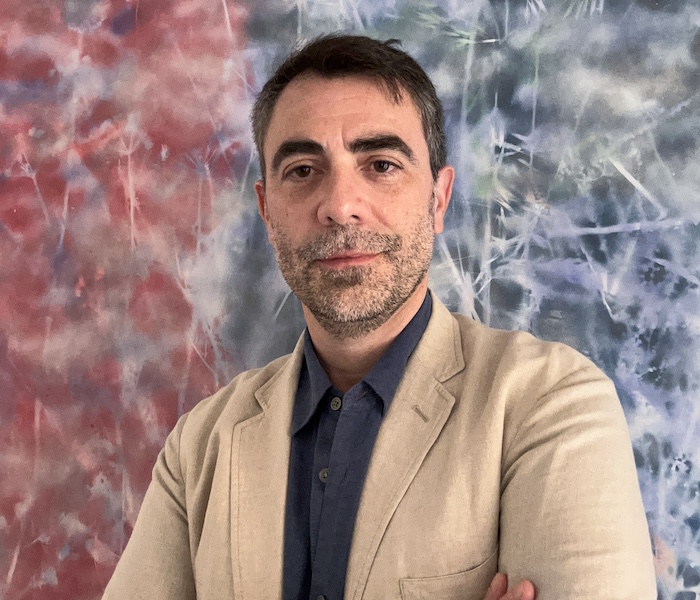Marcus Boon
In Praise of Copying
Harvard University Press
240 pages, 8 1/4 x 5 1/2 inches
ISBN 978 0674047839
What you’re reading right now is a copy. I’m using only words taken and recycled from other places.
You probably do it too. Even the questions you’re asking are copies, repetitions.
You might think that I’m criticizing you. But In Praise of Copying argues that copying is an essential part of being human, that the ability to copy is worthy of celebration, and that, without recognizing how integral copying is to being human, we cannot understand ourselves or the world we live in.
This is a deceptively simple—but original—argument.
In spite of the laws, stigmas, and anxieties attached to it, the word “copying” permeates contemporary culture. Copying shapes discourse on issues from hip-hop to digitization to gender reassignment. Copying is particularly crucial in legal debates concerning intellectual property and copyright. Yet as a philosophical concept, copying remains poorly understood.
Working comparatively across cultures and times, I examine what this word means—historically, culturally, philosophically, even biologically—and why it fills us with fear and fascination.
I argue that the dominant legal-political structures that define copying today obscure much broader processes of imitation that have constituted human communities for ages and continue to shape various subcultures today.
Drawing on contemporary art, music and film, the history of aesthetics, critical theory, and Buddhist philosophy and practice, In Praise of Copying seeks to show how and why copying works, what the sources of its power are, and the political stakes of renegotiating the way we value copying in the age of globalization.
I copied some of this from the dustjacket of my book…

Dominant legal-political structures that define copying today obscure much broader processes of imitation that have constituted human communities for ages.
The book is intended to be a primer on copying: each chapter examines some aspect of copying, from the core philosophical issue as to what a copy is, the history of the word “copy,” copying as an act of transformation, appropriation or deception, to mass production and montage as ways of making copies.
Teaching contemporary literature and culture at a university, I was interested in students’ attitudes to sampling, cutting and pasting, plagiarism, downloading and such matters.
What struck me when I talked to students is that although they were very interested in these things, they were completely unable to justify their interest—mostly because these things involve copying and they’d repeatedly been told that copying is bad.
At the same time, I realized that most of the literature on intellectual property has been written by legal scholars who often hold admirable positions on legal reform—but seem to have no analysis of copying itself, not beyond the fact that copying appears to be a useful tool that could also be misused.
One of my own teachers, Michael Taussig, wrote a great book on imitation in the 1990s, called Mimesis and Alterity. That really opened my eyes to how fundamental practices of imitation are in human and nonhuman cultures. So I wanted to rethink the idea of copying as it appears to me today navigating contemporary cultures—the internet, musical subcultures, having a family, or thinking about politics—using the broad philosophical and anthropological analysis that Taussig had made.
And I wanted the book to have a freestyle flavor, that it should be an improvised response to whatever situations I encountered.
When I actually started doing research on the subject, things opened up in surprising ways. I’d been interested in Buddhist philosophy for a long time and I found myself rethinking the philosophical frameworks that have been used to describe copying—most of which come down to us from Plato.
Although copying seems like a peripheral issue in Buddhism, in fact most Buddhist practices and much of Buddhist philosophy is actually a profound analysis and evaluation of our existence as beings that imitate. It’s clear that other cultures have valued copying in different ways from our own and that it’s possible to imagine reconfigurations of our own society that acknowledge the value of copying.
Different practices of copying would make possible new forms of community, exchange, sharing. In fact we see those things emerging around us today, only to be shut down by a legal-philosophical tradition that finds it difficult to imagine that anything exists that is not private property. Despite what free-market boosters might say, it’s not private property that really underlies our economy but the ability to mass-produce copies.
As the ability to mass-produce copies spreads around the world, and becomes available to more and more people through computers and so on, interesting questions are arising. What will the world look like when everyone is able to copy everything freely, when there are enough copies for everyone? We can only answer this question by really understanding where our desire to copy comes from and what choices are available to us in terms of what to copy and how.
That also brings up an uncomfortable but important issue: To what degree are we ourselves copies?
We live in a culture that highly prizes individuality. But we also know that biologically and psychologically, we’re all very similar. Politically too, there’s no obvious reason why different people should have different rights.
How does the world change if/when we start to take seriously our similarity and sameness?
Although I purposefully avoided paying excessive attention to computers, the internet and social media, I think that there is a strong and helpful analysis of those things in my book.
One of the arguments you hear a lot today is that we’re living in a totally new world because of computers—in particular because of the new abilities to copy that they offer us.
While I don’t totally discount that argument I have a particular take on it. Whatever the advances in technology, our minds are still the fastest computers and still crank out more copies than any computer could do. Pornography, spam, symbolic representations of infinity: our minds already make it all.
In the “Montage” chapter (pp. 167-172), I examine digital and analog modes of copying and point out (via the work of techno theorists Brian Massumi and Julian Dibbell) that there is no such thing as a digital copy—because all copies have to be translated into analog form in order to manifest. In other words, processes of digital copying obey the same principles that I set out for other kinds of copying that seem more lo-fi: tactile contagion and a similarity that emerges from nonconceptual sameness.
If I can be allowed to point to a second aspect of the book, it would be the importance of what I call industrial folk cultures.
We know that subcultures, indigenous cultures, peasant cultures and the various groupings of the people are intensely interested in copying, whether it’s through practices such as quilting, the transmission of folk songs or the cut and paste of hip-hop. Often those activities put ordinary or poor people on the wrong side of the law—they’re “stealing,” because they don’t have the economic power to participate in the culture of ownership.
I think there’s an interesting and neglected politics to folk cultures as regards copying—and one that we’ll be hearing a lot more of, as the poor people of the world start to communicate with each other and discover the details of each other’s situations.
I find things like hip-hop, punk or cumbia very interesting in this regard—because people around the world “imitate” those styles in a way that’s profound and empowering. We saw what happened in the 1960s when practices of freedom “went viral.” I think there’s a lot more of that going to be coming up.

In fact most Buddhist practices and much of Buddhist philosophy is actually a profound analysis and evaluation of our existence as beings that imitate.
I would like people to understand how fully and fundamentally they already participate in “cultures of the copy,” and that the particular legal regime that today globally organizes definitions of appropriate and inappropriate copying has a very particular history and benefits a particular group of people.
Modern industry and the modern state both rely completely on practices of imitation, but they should not have exclusive control over the parameters of citizens’ practices of copying.
I think that scientists, artists, lovers, political activists need to confront the way in which their lives and practices are shaped by copying. Everyone needs to think deeply and act decisively in making the most profound or joyful use they can of our mimetic faculties. In other words, it’s not a question of whether to copy, but how to copy and what.
.jpg)



We don't put paywalls. We don't distract you with ads. We don't sell your data.
Please help to keep this running!